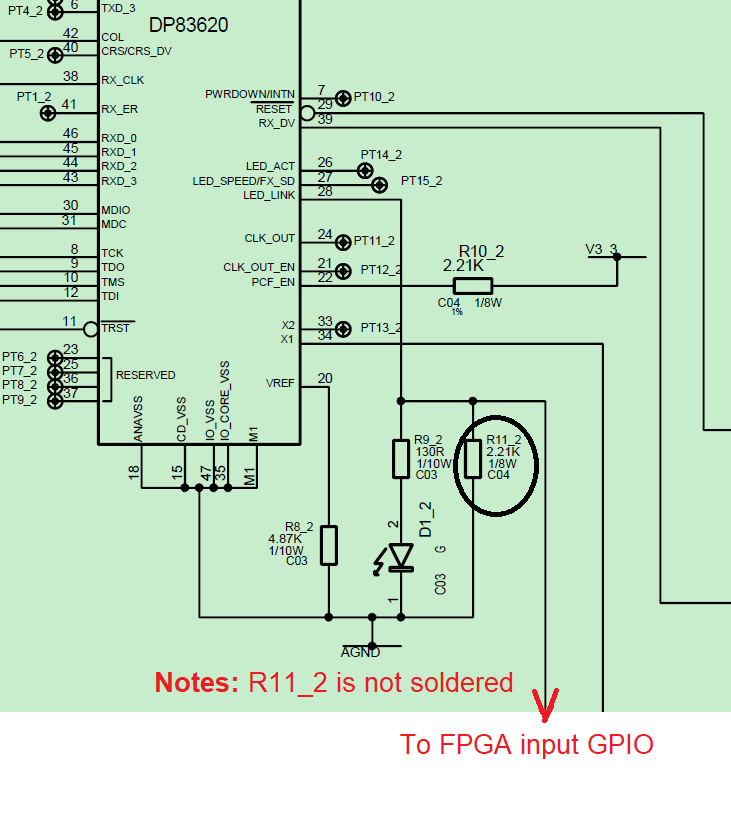After I reset the DP83620(give the pin29:RESET_N low level for 2ms) , the PHY didn't work. If I reset it again, it will recover.
The three signals RX_DV, RXD_0, RXD_1 which are all low level means there is no valid output. This means PHY chip didn't implement the communication function at this time. So, it seems like the PHY chip is in dead status.
I also read the PHY Status Register (PHYSTS) on DDU and it's 0x0004 which means "Link not established".
This issue happens occasionally. So I wonder in what situation the PHY chip will like this( in dead status) and how to avoid this? Thanks!


